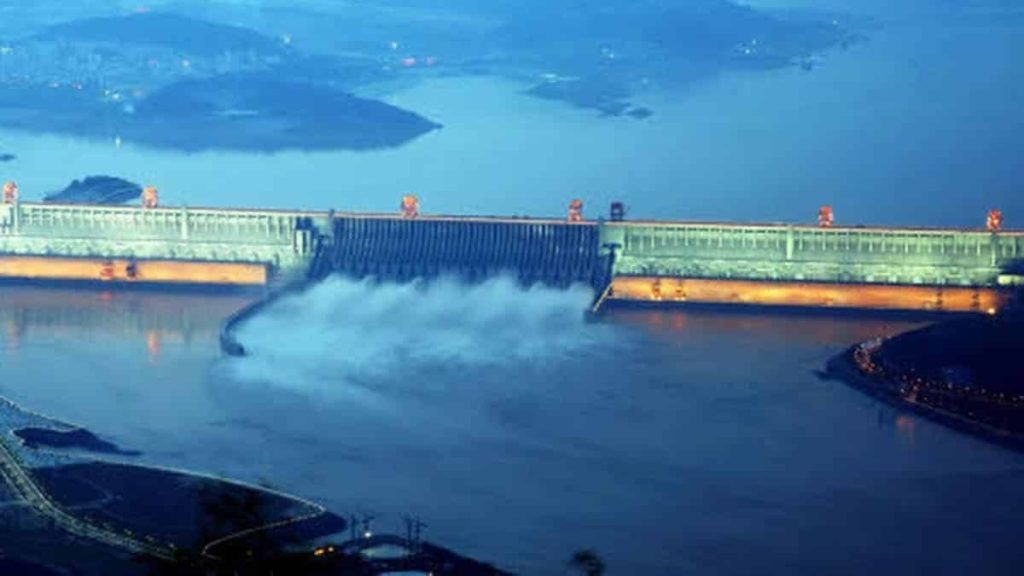NASA states that China has the potential to slow down Earth’s rotation with a single action – Glass Almanac

The Three Gorges Dam in China is often praised as a marvel of modern engineering, but according to NASA, this colossal structure may have an unexpected impact on our planet. Simply filling its vast reservoir with water could slow down Earth’s rotation. While the effect is minuscule, it highlights how human activities can subtly influence even the most fundamental planetary dynamics.Located on the Yangtze River in Hubei province, the Three Gorges Dam is the largest hydroelectric power station in the world. It took nearly two decades to build and was completed in 2012. The dam spans an impressive 2,335 meters in length and reaches a height of 185 meters. But what makes it truly remarkable is its ability to hold up to 40 cubic kilometers of water—a staggering 40 trillion liters.According to NASA, this massive redistribution of water is enough to slightly alter Earth’s rotation. The phenomenon is linked to a fundamental concept in physics: the moment of inertia, which describes how the distribution of mass affects a rotating body’s speed. A common analogy is that of a figure skater—when they pull their arms in, they spin faster; when they extend them, they slow down. The same principle applies to Earth. By shifting a vast amount of water, the dam subtly changes the planet’s mass distribution, impacting its rotation.NASA’s findings stem from research dating back to 2005, when scientists were analyzing the effects of the 2004 Indian Ocean earthquake and tsunami on Earth’s rotation. That catastrophic event, which caused a massive shift in tectonic plates, altered Earth’s mass distribution and shortened the length of a day by 2.68 microseconds.The Three Gorges Dam, while not as dramatic as an earthquake, has a comparable effect. According to Dr. Benjamin Fong Chao, a geophysicist at NASA’s Goddard Space Flight Center, filling the dam’s reservoir could shift Earth’s axis by about two centimeters and extend the length of a day by 0.06 microseconds. While these numbers are tiny, they are measurable and contribute to a broader pattern of rotational changes.The idea that human activities can influence Earth’s rotation is not new. The melting of polar ice caps, driven by climate change, also affects mass distribution and contributes to rotational shifts. As ice melts and water flows toward the equator, the planet’s rotation slows down in a similar way.Interestingly, even before the construction of the Three Gorges Dam, scientists had observed a gradual slowing of Earth’s rotation. This is mainly due to the gravitational pull of the Moon, which has been lengthening Earth’s days by about 1.7 milliseconds per century. The dam’s impact is minor in comparison, but it is part of a larger set of influences—including earthquakes, rising sea levels, and shifting atmospheric pressure—that cumulatively affect our planet’s movement.Given the various factors slowing Earth’s rotation, some scientists have proposed adjusting our global timekeeping systems. Leap seconds are occasionally added to Coordinated Universal Time (UTC) to keep atomic clocks in sync with Earth’s gradual slowing. However, if the rate of deceleration continues, we may one day need a negative leap second, meaning a minute with only 59 seconds instead of 60.While this scenario is not imminent, it underscores the unexpected consequences of large-scale human projects. The construction of the Three Gorges Dam, though intended to provide clean energy and flood control, has joined a long list of human activities shaping the planet in ways we are only beginning to understand.The realization that a single dam can affect Earth’s rotation, however slightly, serves as a reminder of the interconnectivity between human engineering and planetary physics. While the effects of the Three Gorges Dam are minuscule, they highlight the importance of considering long-term global impacts when designing massive infrastructure projects.China is not alone in building large-scale hydroelectric dams. Countries like Brazil, the United States, and India also have massive reservoirs that could, in theory, contribute to similar effects. While each dam’s individual impact is small, their cumulative effect may be more significant than previously thought.Ultimately, NASA’s findings encourage a broader reflection on how human actions, even seemingly localized ones, can ripple out to influence planetary processes. As technology advances and nations undertake even grander engineering feats, understanding these subtle but real consequences will be crucial in balancing development with environmental responsibility.Comment Save my name, email, and website in this browser for the next time I comment.
Discover the future through Glass Almanac, your premier source for all things tech and entertainment. From the latest in augmented reality to cutting-edge scientific discoveries and trending TV shows, we bring you insightful, up-to-the-minute coverage. Dive into our world where technology meets daily life and stay ahead of the curve with Glass Almanac.Glass Almanac100 Tech WaySan Francisco, CA 94107United StatesPhone: +1 415-555-0100Email: contact@glassalmanac.comStay connected with us for the latest updates and insights.






